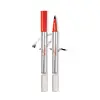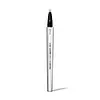What's inside
What's inside
 Key Ingredients
Key Ingredients

 Benefits
Benefits

 Concerns
Concerns

 Ingredients Side-by-side
Ingredients Side-by-side

Water
Skin ConditioningButylene Glycol
HumectantStyrene
Perfuming1,2-Hexanediol
Skin ConditioningPolyacrylic Acid
Emulsion StabilisingCaprylyl Glycol
EmollientPhenoxyethanol
PreservativeAminomethyl Propanol
BufferingCI 19140
Cosmetic ColorantPropylene Glycol
HumectantCitric Acid
BufferingCI 17200
Cosmetic ColorantPropanediol
SolventCI 42090
Cosmetic ColorantBenzyl Alcohol
PerfumingCaprylhydroxamic Acid
Sodium Hyaluronate
HumectantHydrolyzed Keratin
HumectantSwertia Japonica Extract
Skin ConditioningXanthan Gum
EmulsifyingGlycerin
HumectantPolygonum Multiflorum Extract
Skin ConditioningHydrolyzed Rice Extract
Skin ConditioningLinum Usitatissimum Seed Extract
PerfumingSodium Benzoate
MaskingAlcohol Denat.
AntimicrobialAmmonium Acrylates Copolymer
Lauryl PEG-9 Polydimethylsiloxyethyl Dimethicone
Skin ConditioningSodium Chloride
MaskingSodium Lauryl Sulfate
CleansingSodium/Mea Laureth-2 Sulfosuccinate
CleansingTocopherol
AntioxidantWater, Butylene Glycol, Styrene, 1,2-Hexanediol, Polyacrylic Acid, Caprylyl Glycol, Phenoxyethanol, Aminomethyl Propanol, CI 19140, Propylene Glycol, Citric Acid, CI 17200, Propanediol, CI 42090, Benzyl Alcohol, Caprylhydroxamic Acid, Sodium Hyaluronate, Hydrolyzed Keratin, Swertia Japonica Extract, Xanthan Gum, Glycerin, Polygonum Multiflorum Extract, Hydrolyzed Rice Extract, Linum Usitatissimum Seed Extract, Sodium Benzoate, Alcohol Denat., Ammonium Acrylates Copolymer, Lauryl PEG-9 Polydimethylsiloxyethyl Dimethicone, Sodium Chloride, Sodium Lauryl Sulfate, Sodium/Mea Laureth-2 Sulfosuccinate, Tocopherol
Water
Skin ConditioningButylene Glycol
HumectantDipropylene Glycol
HumectantAmmonium Styrene/Acrylates Copolymer
Alcohol
AntimicrobialPvp
Emulsion StabilisingTitanium/Titanium Dioxide
Cosmetic ColorantBeheneth-30
CleansingSodium Polyaspartate
HumectantCharcoal Powder
AbrasivePhenoxyethanol
PreservativePentylene Glycol
Skin ConditioningSodium Dehydroacetate
PreservativePolyglyceryl-10 Myristate
Skin ConditioningSodium Metaphosphate
BufferingAmmonium Acrylates Copolymer
Aluminum Hydroxide
EmollientCitric Acid
BufferingXanthan Gum
EmulsifyingDisodium EDTA
Silica
AbrasiveSimethicone
EmollientCI 77491
Cosmetic ColorantCI 77492
Cosmetic ColorantCI 77499
Cosmetic ColorantCI 77891
Cosmetic ColorantWater, Butylene Glycol, Dipropylene Glycol, Ammonium Styrene/Acrylates Copolymer, Alcohol, Pvp, Titanium/Titanium Dioxide, Beheneth-30, Sodium Polyaspartate, Charcoal Powder, Phenoxyethanol, Pentylene Glycol, Sodium Dehydroacetate, Polyglyceryl-10 Myristate, Sodium Metaphosphate, Ammonium Acrylates Copolymer, Aluminum Hydroxide, Citric Acid, Xanthan Gum, Disodium EDTA, Silica, Simethicone, CI 77491, CI 77492, CI 77499, CI 77891
 Reviews
Reviews

Ingredients Explained
These ingredients are found in both products.
Ingredients higher up in an ingredient list are typically present in a larger amount.
We don't have a description for Ammonium Acrylates Copolymer yet.
Butylene Glycol (or BG) is used within cosmetic products for a few different reasons:
Overall, Butylene Glycol is a safe and well-rounded ingredient that works well with other ingredients.
Though this ingredient works well with most skin types, some people with sensitive skin may experience a reaction such as allergic rashes, closed comedones, or itchiness.
Learn more about Butylene GlycolCitric Acid is an alpha hydroxy acid (AHA) naturally found in citrus fruits like oranges, lemons, and limes.
Like other AHAs, citric acid can exfoliate skin by breaking down the bonds that hold dead skin cells together. This helps reveal smoother and brighter skin underneath.
However, this exfoliating effect only happens at high concentrations (20%) which can be hard to find in cosmetic products.
Due to this, citric acid is usually included in small amounts as a pH adjuster. This helps keep products slightly more acidic and compatible with skin's natural pH.
In skincare formulas, citric acid can:
While it can provide some skin benefits, research shows lactic acid and glycolic acid are generally more effective and less irritating exfoliants.
Most citric acid used in skincare today is made by fermenting sugars (usually from molasses). This synthetic version is identical to the natural citrus form but easier to stabilize and use in formulations.
Read more about some other popular AHA's here:
Learn more about Citric AcidPhenoxyethanol is a preservative that has germicide, antimicrobial, and aromatic properties. Studies show that phenoxyethanol can prevent microbial growth. By itself, it has a scent that is similar to that of a rose.
It's often used in formulations along with Caprylyl Glycol to preserve the shelf life of products.
Water. It's the most common cosmetic ingredient of all. You'll usually see it at the top of ingredient lists, meaning that it makes up the largest part of the product.
So why is it so popular? Water most often acts as a solvent - this means that it helps dissolve other ingredients into the formulation.
You'll also recognize water as that liquid we all need to stay alive. If you see this, drink a glass of water. Stay hydrated!
Learn more about WaterXanthan gum is used as a stabilizer and thickener within cosmetic products. It helps give products a sticky, thick feeling - preventing them from being too runny.
On the technical side of things, xanthan gum is a polysaccharide - a combination consisting of multiple sugar molecules bonded together.
Xanthan gum is a pretty common and great ingredient. It is a natural, non-toxic, non-irritating ingredient that is also commonly used in food products.
Learn more about Xanthan Gum